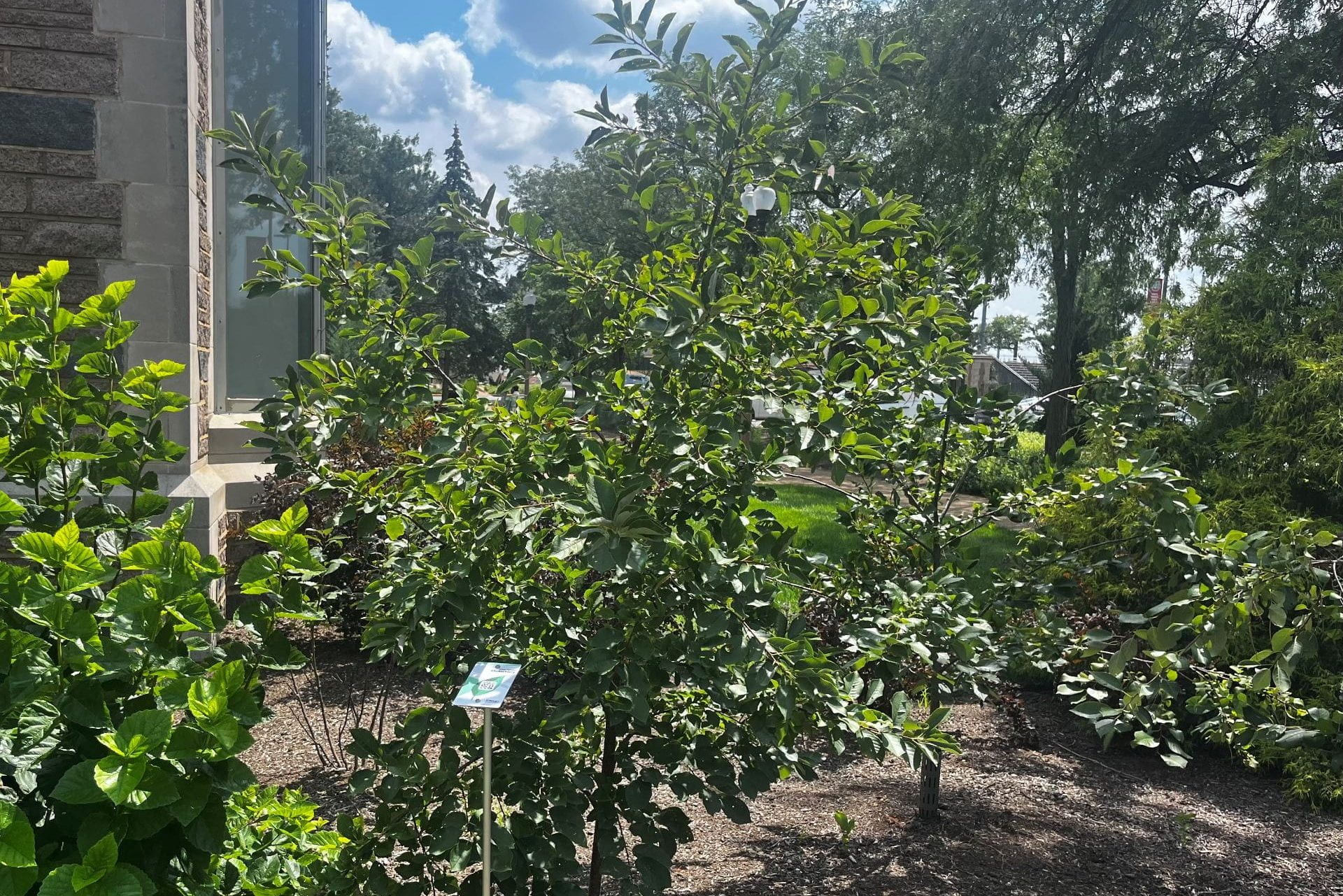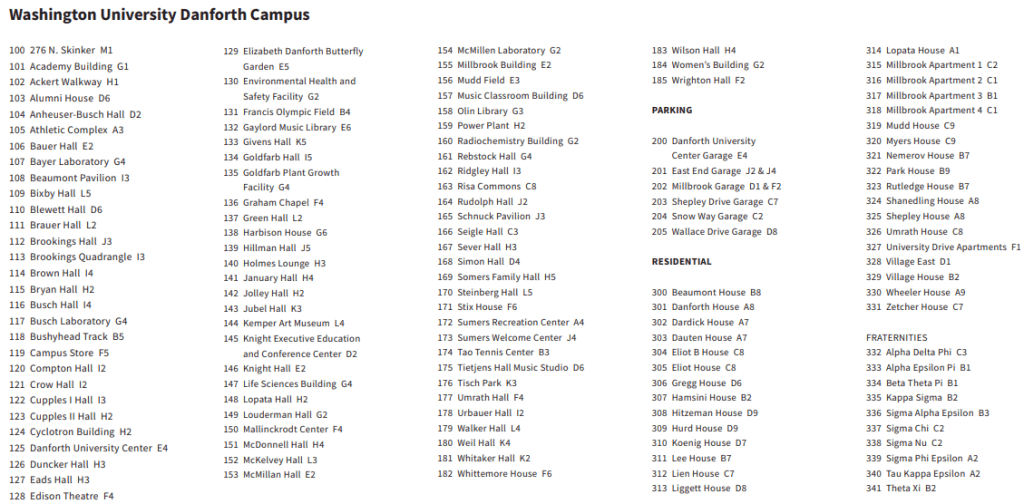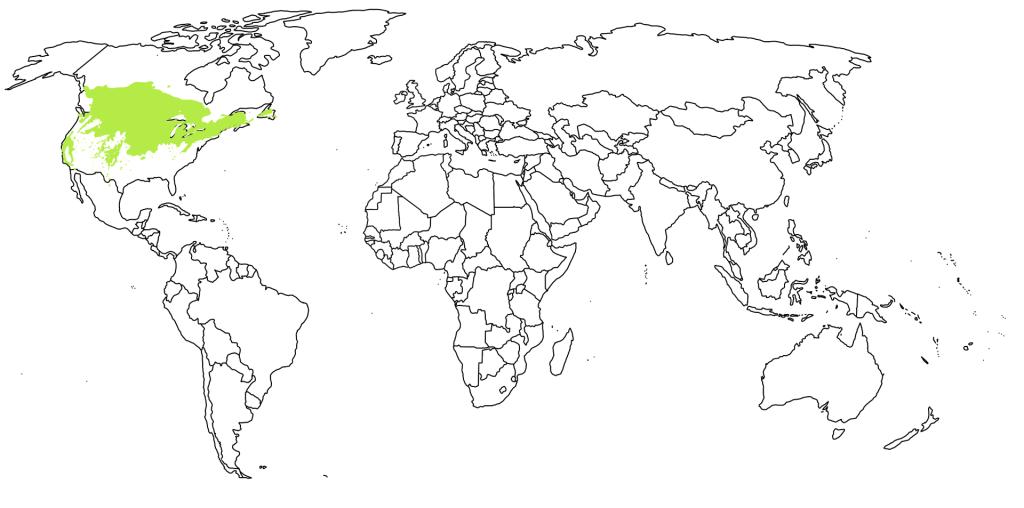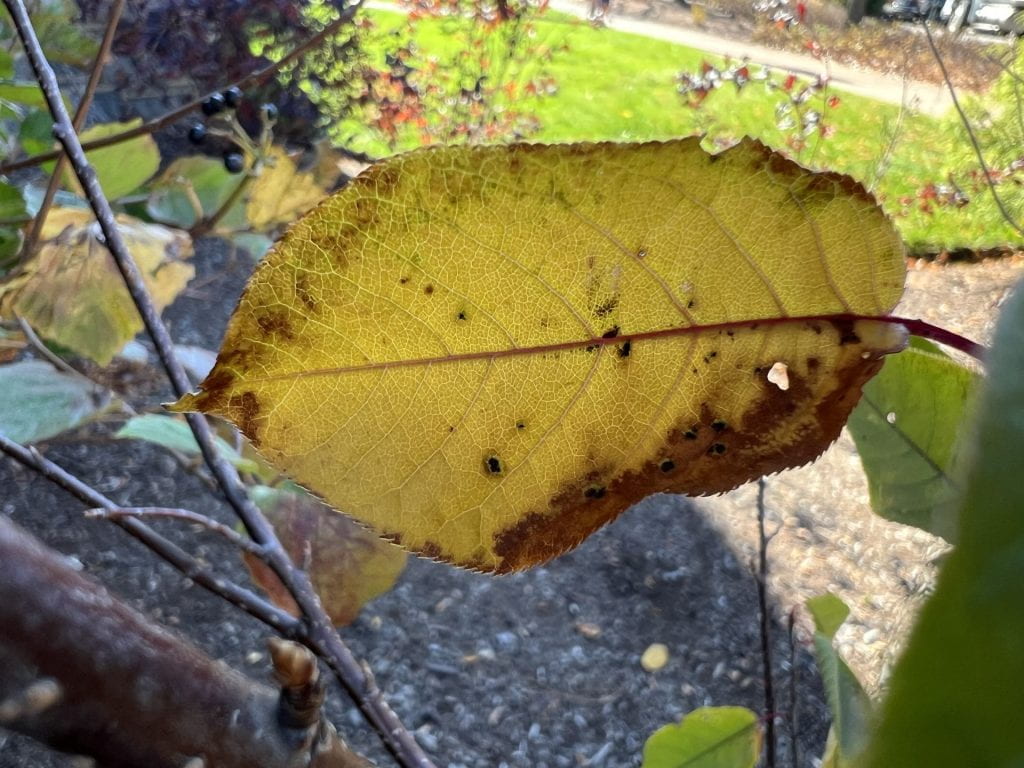Chokecherry
Arbor Walk #123, TreeKeeper ID #7105

The wild Chokecherry is usually found in dense thickets due to its vast root system which can sprout runners, but on campus you will find them managed to prevent this. It blooms beautiful white flowers that eventually turn into dark purple fruit. This plant gets its common name from the immature fruit that is puckery. Be careful though, because the Chokecherry’s seeds have low amounts of toxic chemicals.
Many species of birds, chipmunks, mice, and squirrels eat the seeds and/or fruit, and farther north many large animals such as moose, bear, and bighorn sheep eat the foliage. Tent caterpillars (Malacosoma) often construct their webs on the branches, and many other insects use it as well.


GPS Coordinates
N/A
Percent Concrete
N/A
Distance to Buildings
| Year | Close Building #1 | Close Building #2 | Close Building #3 |
|---|---|---|---|
Distance to Other Species
| Year | Close Species #1 | Close Species # 2 | Close Species # 3 |
|---|---|---|---|
Standard Measurements
| Year | Height (m) | DBH (cm) | Crown Diameter N-S (m) | Crown Diameter E-W (m) | Average Crown Diameter (m) |
|---|---|---|---|---|---|
| 2023 | 1.98 | 1 | 0.93 | 1.15 | 1.04 |
Nests and Pests
| Year | Description |
|---|---|
| 2023 | N/A |
Leaf Identification
The leaves of the Chokecherry are 2″ to 6″ long and 1″ to 3″ wide. The leaf shape is ovate to obovate, and the leaf is slightly pubescent along the underside veins. The margin is serrated, and the venation is pinnate. When the leaves are crushed, they are aromatic.
Twig and Bud Identification
The twigs of the Chokecherry can be gray, brown, purple, or red. The buds are about a 1/3″ long and covered with many brown scales. The twigs often produce an unpleasant odor when broken, but please do not damage our trees.
Bark Identification
The Chokecherry’s bark is smooth and has noticeable lenticels (pores) that sometimes develop shallow fissures.
Fruit Identification
The fruit of the Chokecherry turn dark red to black when ripe. They are drupes, arranged in clusters that hang off of a central fruiting stem. Their diameter is usually around 1/3″.
Flower Identification
The Chokecherry’s flowers appear in long (3″ to 6″), terminal racemes. Each flower has 4 or 5 white petals with green to yellow sepals. The flowers are tubular and less than an inch long.







